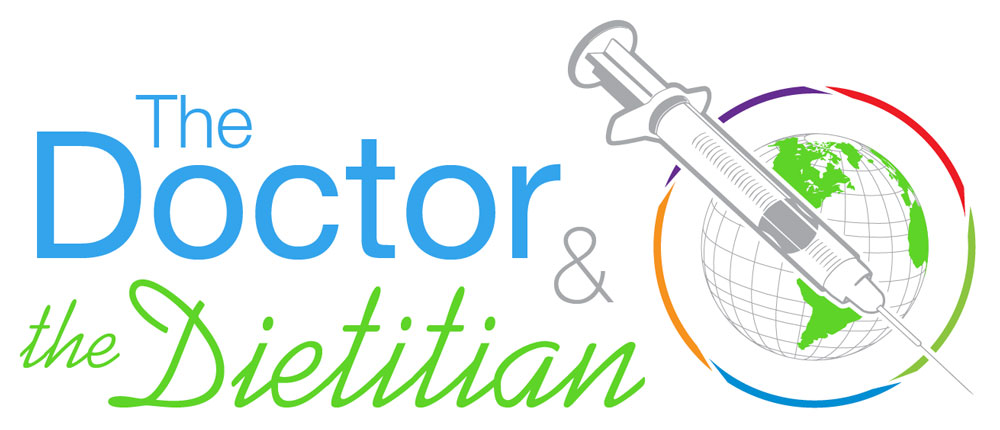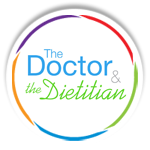
 Marion A. Hauser, MS, RD
Marion A. Hauser, MS, RD, CEO of
Caring Medical Florida, a comprehensive Prolotherapy clinic located in Fort Myers, FL, brings a unique approach to diet and nutrition that is scientific, yet practical for everyone. As a busy executive, registered dietitian, food enthusiast, and avid athlete, Marion combines her common sense organizational skills with food science, human physiology, and no-nonsense food preparation skills in a unique approach to diet and wellness.
 Ross A. Hauser, MD
Ross A. Hauser, MD is the Medical Director of Caring Medical and renown Prolotherapist and Natural Medicine Specialist, who is responsible for spurring on the concept of
Diet Typing and the Hauser Diet principles. Not satisfied with the traditional approach to wellness for his patients, he collaborated with Marion, his registered dietitian wife and business partner, to develop an objective method for determining how each person should eat.
The Doctor and the Dietitian love to talk to people about all different areas of health and wellness because they are passionate about health and want to share it with the world! Their practice, Caring Medical Florida, is a comprehensive Prolotherapy and Natural Medicine Clinic where they get the ideas for many of the topics shared in these articles.
If you are local to SW Florida, you can find their articles in The Doctor and The Dietitian column that appears in local SW Florida newspapers The Island Sun and River Weekly News. Their articles typically appear in Section B around page 208 to 218.
If you would like them to cover a specific topic in one of their columns or are interested in seeing one of the Caring Medical providers, please let us know by using this form or calling our office at (239) 308-4755.
What Does “Diet” Mean To You?
When most people think “diet” they automatically think weight loss. What most people don’t realize is that diet actually means “a food or drink regularly provided or consumed” or “habitual nourishment.” Funny how the concept of nourishment gets completely tossed to the side in our society – everyone wants a quick fix to their problems and it is often at the expense of overall health. But our question to you is:
What are you doing to habitually nourish your body? Do you know what you need to eat for sufficient nourishment?
The Hauser Diet is designed to do just that – figure out exactly what food and drink to regularly consume so that you are constantly nourished. Here are some ideas of what to expect from eating right for your diet type:
What To Expect When Eating Right For Your Diet Type
Healthy Weight
When you eat the right types of food to support your physiology, your body will begin to look and feel the way it should.
So for those of us who need to lose weight, weight loss is typically achieved by our patients and with far less frustration than previous attempts. For others who are underweight and need to gain weight, that can also be achieved by following the right Diet Type. And of course all of our normal weight patients will stay in the healthy range and also enjoy the added benefits of eating the right food.
More Energy
Next to weight loss low energy levels are the most common complaint we see at
our office. We can’t believe how many people are struggling to get through their day! What most people don’t realize is that the purpose of food is to create energy for the body to function well. You know the term metabolism – the process that is so often attached to weight? Well, the result of metabolism is energy! Eating the wrong types of food can actually slow down you metabolism, which in turn slows down your energy production. If you are not following your Diet Type your metabolism may not be working efficiently and you may find yourself dozing off in the middle of the day.
Better Digestion
Nourishment starts with digestion and being able to break down all of your food so that nutrients become available to your body. It’s amazing to see how different diet types digest certain foods better than others. There are many different causes to improper digestion, but the very first step should be changing your diet to support your physiology. Sometimes it’s just that simple and we see improvements in many of our patients.
Better Sleep
When we say that diet affects every aspect of your body, we do mean every aspect. Eating the wrong types of food puts stress on your body, and
sleep is one thing that can be affected by the wrong food. Many patients are surprised that after changing their diet, they actually sleep better. Not only can patients fall asleep better, but they stay asleep through the night and wake up feeling more rested.
Improved Mental Function
Mental clarity is another improvement seen with the Hauser Diet. Patients have told us that they feel more alert, feel less foggy-headed and can concentrate more. Having more clarity makes it easier to work, to do well in school, to raise a family, to enjoy the company of others. By eating right for your diet type you can be sure that your brain is receiving the right nutrients to function at its best.
Regulated Body Temperature
Diet affects blood pH, and blood pH can affect the temperature of your body. Do you tend to feel cold compared to most people? You may have acidic blood. If you want to stop having to carry an extra sweater with you, diet could be the answer. Or maybe you feel warm or have the tendency to get uncomfortably hot. You may have alkaline blood. Again, diet could be the solution to those uncomfortable and embarrassing situations where you start sweating while everyone else around you is fine.
Less Anxiety
Blood pH can also affect your level of
anxiety. We have many cases of people who struggle with anxiety, yet after a diet change and possibly some other natural medicine remedies are able to control their anxiety. As we said before, it’s amazing to see all that food can do.
Now You Can Eat Like An Animal!®
As described in our book,
The Hauser Diet: A Fresh Look At Healthy Living!, The Hauser Diet is a scientifically determined approach to a practical, livable, and individualized lifestyle plan that can optimize your health, increase your energy, and help you maintain your ideal weight and youthful figure!
Each and every one of us has a unique individual physiology requiring different types of food—we each have our own Diet Type!

 Marion A. Hauser, MS, RD, CEO of Caring Medical Florida, a comprehensive Prolotherapy clinic located in Fort Myers, FL, brings a unique approach to diet and nutrition that is scientific, yet practical for everyone. As a busy executive, registered dietitian, food enthusiast, and avid athlete, Marion combines her common sense organizational skills with food science, human physiology, and no-nonsense food preparation skills in a unique approach to diet and wellness.
Marion A. Hauser, MS, RD, CEO of Caring Medical Florida, a comprehensive Prolotherapy clinic located in Fort Myers, FL, brings a unique approach to diet and nutrition that is scientific, yet practical for everyone. As a busy executive, registered dietitian, food enthusiast, and avid athlete, Marion combines her common sense organizational skills with food science, human physiology, and no-nonsense food preparation skills in a unique approach to diet and wellness.
 Ross A. Hauser, MD is the Medical Director of Caring Medical and renown Prolotherapist and Natural Medicine Specialist, who is responsible for spurring on the concept of Diet Typing and the Hauser Diet principles. Not satisfied with the traditional approach to wellness for his patients, he collaborated with Marion, his registered dietitian wife and business partner, to develop an objective method for determining how each person should eat.
Ross A. Hauser, MD is the Medical Director of Caring Medical and renown Prolotherapist and Natural Medicine Specialist, who is responsible for spurring on the concept of Diet Typing and the Hauser Diet principles. Not satisfied with the traditional approach to wellness for his patients, he collaborated with Marion, his registered dietitian wife and business partner, to develop an objective method for determining how each person should eat.



